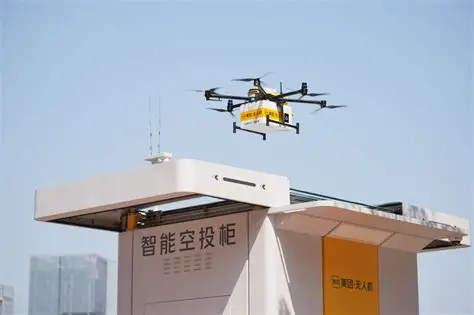
- English
- 简体中文
- Español
- Português
- русский
- Français
- 日本語
- Deutsch
- tiếng Việt
- Italiano
- Nederlands
- ภาษาไทย
- Polski
- 한국어
- Svenska
- magyar
- Malay
- বাংলা ভাষার
- Dansk
- Suomi
- हिन्दी
- Pilipino
- Türkçe
- Gaeilge
- العربية
- Indonesia
- Norsk
- تمل
- český
- ελληνικά
- український
- Javanese
- فارسی
- தமிழ்
- తెలుగు
- नेपाली
- Burmese
- български
- ລາວ
- Latine
- Қазақша
- Euskal
- Azərbaycan
- Slovenský jazyk
- Македонски
- Lietuvos
- Eesti Keel
- Română
- Slovenski
- मराठी
The Foundation for Graceful Flight: As the Low-Altitude Economy Takes Off, How Engineering Plastics Became the "Unsung Heroes"
2025-10-27
In September 2025, policy releases in China's low-altitude economy sector were characterized by multiple administrative levels, diverse fields, and high frequency. This report, through a systematic review and analysis of 52 policies, reveals the overall landscape, regional characteristics, and development trends of the current low-altitude economy policy system. Statistics show that provincial governments are the main force behind policy releases, accounting for 44.2%; over 70% of policies involve cross-sector applications; and 96.2% of policies pertain to scenario cultivation. These figures indicate that China's low-altitude economy is transitioning from top-level design to comprehensive implementation, providing momentum for industrial development.
First, what is the low-altitude economy?
The low-altitude economy is a comprehensive economic form driven by various low-altitude flight activities of both manned and unmanned aircraft, radiating out to spur integrated development in related fields. It primarily focuses on airspace with a true altitude below 1000 meters (with particular attention to airspace below 300 meters). Its core vehicles are Unmanned Aerial Vehicles (UAVs) and electric Vertical Take-Off and Landing (eVTOL) aircraft. It encompasses a complete industrial chain, from R&D and manufacturing of aircraft, to low-altitude flight operations, to necessary infrastructure support (such as vertiports/landing areas, communication, navigation) and comprehensive services (like logistics and distribution, passenger transport, emergency response, agricultural and forestry work).
In simple terms, it aims to transform the sky above us into a three-dimensional, networked "new dimension of transportation," thereby greatly enhancing social efficiency and creating new business models and lifestyles.
As the wave of the "low-altitude economy" sweeps across the globe, from drone logistics to "air taxis," we marvel at the technological sophistication of aircraft cutting through the sky, but often overlook a crucial fact: the lightness and resilience of these aircraft are largely thanks to an invisible materials revolution – engineering plastics.

The low-altitude economy imposes demands on aircraft materials: they must be lightweight to extend flight time, sturdy to ensure safety, weather-resistant to handle complex environments, and capable of enabling complex aerodynamic designs. It is these very demands that have pushed engineering plastics from behind the scenes to the forefront, making them indispensable "unsung heroes" for low-altitude aircraft.
Why Engineering Plastics?
Compared to traditional metal materials, engineering plastics (such as Nylon, Polycarbonate, etc.) and their high-performance composites (like Carbon Fiber Reinforced Plastics) offer unparalleled advantages:
Extreme Lightweighting: This is the most core requirement. Lighter weight means longer range and greater payload, which is the lifeline for the commercial viability of low-altitude aircraft.
Superior Design Freedom: Through processes like injection molding, complex, integrated structures that are difficult to achieve with traditional metalworking can be manufactured, reducing part count and optimizing aerodynamic performance.
Excellent Fatigue Resistance and Impact Strength: Capable of withstanding vibrations during takeoff/landing and potential impacts, ensuring flight safety.
Corrosion and Weather Resistance: Unlike metals, there's no worry about rusting, and they can withstand outdoor environments like rain and UV exposure.

Specific Application Examples: Which Plastic is Used Where?
Let's lift the veil on the use of engineering plastics in low-altitude aircraft through a few concrete examples:
Nylon (PA, especially PA66+GF) - Application: UAV Airframe Structures and Landing Gear
Why? Nylon, especially glass-fiber reinforced (GF) Nylon, offers a very high strength-to-weight ratio and excellent impact resistance. It is lighter than aluminum alloy yet provides sufficient structural rigidity to support the entire flight platform.
Specific Scenario: In agricultural spraying drones or logistics drones, the main airframe frame and landing gear are often made of Nylon. It can carry heavy batteries and cargo while withstanding impacts from rough landings. For example, BASF's Ultramid® series Nylon is widely used to manufacture high-load, high-rigidity UAV structural components.
Polycarbonate (PC) - Application: eVTOL Canopies and UAV Gimbal Covers
Why? Polycarbonate is renowned for its high transparency and excellent impact resistance (250 times that of glass), while being very lightweight.
Specific Scenario: For manned eVTOLs ("air taxis"), having a canopy with a broad view and high safety is crucial. SABIC's LEXAN™ PC not only offers glass-like clarity but also possesses remarkable impact strength, effectively resisting strikes from foreign objects during flight. Its innate light weight and excellent processability allow for more complex curved designs, enhancing aerodynamics and aesthetics. Polycarbonate is the ideal material for manufacturing these large, curved transparent components. On consumer drones, the gimbal cover protecting the camera lens also commonly uses PC, ensuring shooting clarity while effectively preventing scratches and impacts.

Polyether Ether Ketone (PEEK) - Application: Internal Motor Insulation Components and Bearings
Why? PEEK is the "king of plastics," belonging to the special engineering plastics category. It possesses excellent high-temperature resistance (continuous use temperature over 250°C), flame retardancy, and self-lubricating properties.
Specific Scenario: Inside the core of eVTOL or UAV motors – the high-power-density motors – temperatures are extremely high. PEEK is used to manufacture motor insulation spacers, slot liners, and other components, ensuring stable operation even at high temperatures. Furthermore, its self-lubricating properties make it suitable for manufacturing small bearings, reducing maintenance needs.

Carbon Fiber Reinforced Thermoplastic Composites (CFRTP) - Application: Aircraft Rotors and Primary Load-Bearing Structures
Why? This is not a single plastic, but a system. It combines the ultimate strength and stiffness of carbon fiber with the toughness and processability of thermoplastic resins (like PEEK, PA). This is the ultimate weapon for achieving the highest level of lightweighting.
Specific Scenario: Aircraft rotors (propellers) have the highest demands on material balance, lightweighting, and fatigue strength. Carbon fiber reinforced composites are the unequivocal choice for manufacturing high-performance rotors. Simultaneously, these materials are extensively used in the wings, frames, and other primary load-bearing structures of eVTOLs to minimize weight while ensuring safety.
Conclusion
The flight path for the low-altitude economy has been charted, and engineering plastics are the very "air" lifting it into a graceful takeoff. From defining the new economic form in the skies, to the resilient Nylon frames, the transparent Polycarbonate canopies, the heat-resistant PEEK components, and the top-tier carbon fiber composites, these precise material choices collectively weave the net of safety and efficiency for low-altitude flight. The next time you see a drone quietly skimming across the sky, you'll know that behind that lightness lies the profound materials science and manufacturing intelligence represented by engineering plastics, shining brightly.




